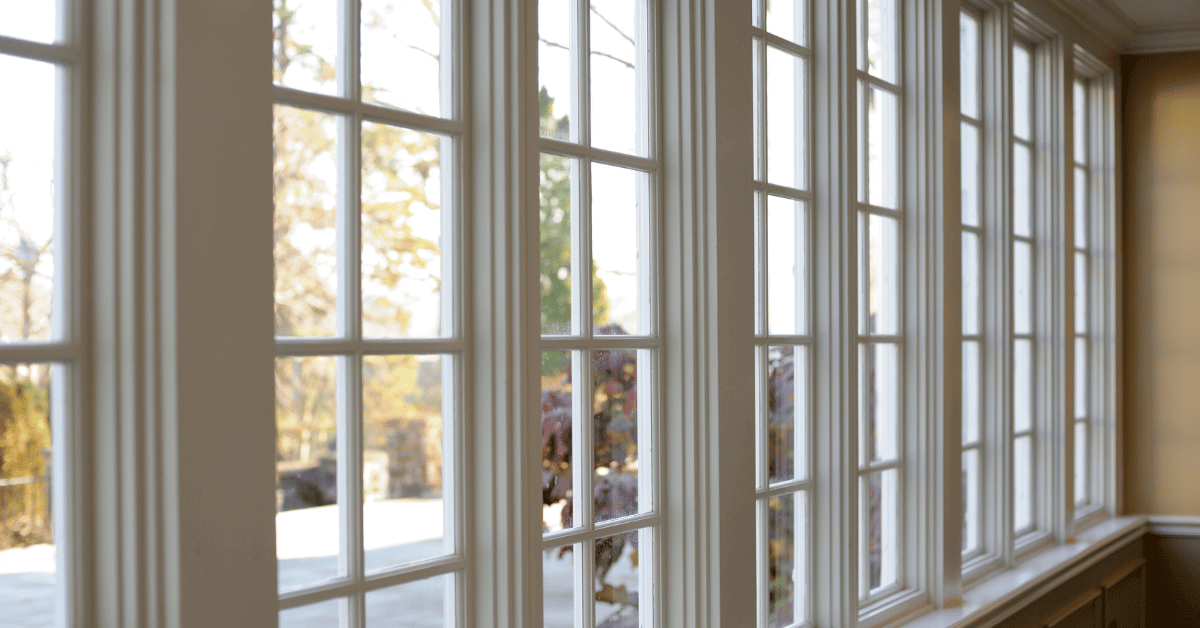Picking out the right windows can feel like trying to find a needle in a haystack, given all the styles out there. If you’re torn between double hung vs single hung windows, you’re not alone. These two are like the VIPs of the window world, showing up everywhere from chic modern homes to cozy cottages. So, let’s dive into the nitty-gritty and figure out which one might just be your home’s next best thing.
Popular

- Large selection of window types
- Compare quotes from local window contractors
- Get clear-cut window quotes and comparable pricing options
Our top pick

- Quickest estimates
- Database of hundreds of professional contractors
- Affordable yet highly professional
Great choice

- Pairs you with up to four pre-vetted pros from their network.
- Free cost calculator
- 24/7 support
What Is a Single-Hung Window?
A single-hung window features a simple yet timeless design. It consists of two sashes, with the top one fixed in place and the bottom one movable, allowing for ventilation from the bottom half of the window. This window style is a classic choice, revered for its simplicity and ease of operation. The single-hung window replacement process is generally straightforward, often making it a cost-effective option for homeowners looking to maintain or restore a traditional look in their residences.
What Is a Double-Hung Window?
In contrast, a double-hung window offers more versatility. Both the upper and lower sashes can move up and down, providing better airflow options and making cleaning a breeze. This functionality makes double-hung window replacement an attractive choice for those seeking both practicality and aesthetic appeal. Double-hung windows are particularly beneficial in rooms facing walkways or decks, where the ability to open the top sash for ventilation without obstructing space is a significant advantage.
Commonalities and Differences

While both window types share a similar appearance, their operational differences set them apart. The primary distinction lies in their sashes; the single-hung window’s single operable lower sash contrasts with the double-hung window’s two movable sashes. This difference affects ventilation, cleaning ease, and safety, with double-hung windows providing more options in each area.
Despite these differences, single and double-hung windows can both be excellent choices for energy efficiency when equipped with modern glass and framing materials. They also share a versatility in design, fitting well with various architectural styles from traditional to contemporary.
| Feature | Single-Hung Window | Double-Hung Window |
|---|---|---|
| FUNCTIONALITY | One movable sash and one stationary sash | Two movable sashes, enhancing ventilation |
| DESIGN AESTHETIC | Reflects a classic and traditional charm | Suits a range of styles from stately colonial to elegant Victorian |
| MAINTENANCE EASE | Energy-efficient options available. Potentially more efficient due to fewer moving parts | Cleaning convenience with both sashes capable of tilting |
| COST | Typically a less expensive | Typically more expensive |
| BEST USAGE | Common on lower floors, including living rooms, kitchens or bedrooms | Common for use in private bathrooms and upper-story rooms |
| ENERGY-EFFICIENCY | Energy-efficient options available. Potentially more efficient due to less moving parts | Energy-efficient with options suitable for all model types |
| SIZES | Often found in taller variants, with custom and standard sizes available | Custom and standard sizes available |
What is the Cost Difference Between a Single-Hung and Double-Hung Windows?
You’ll find that single-hung options often come with a lighter price tag compared to their double-hung counterparts. The reason? Single-hung windows have fewer moving components, making them cheaper to produce. Beyond the complexity of their design, the choice of material also plays a pivotal role in determining the cost. Wood, prized for its customization possibilities, sits at the top of the price spectrum. On the other hand, vinyl, known for its affordability and ease of maintenance, is a budget-friendly choice for homeowners.
When to Pick a Single-Hung Window
Choosing a single-hung window might be best for your project if budget constraints are a priority. Their simpler design often makes them more affordable than their double-hung counterparts. Additionally, single-hung windows can be a wise choice for areas where the window will seldom be opened, such as high or hard-to-reach places. They are also slightly more energy-efficient due to having fewer movable parts, which can lead to less air infiltration over time.
When to Pick a Double-Hung Window
Double-hung windows shine in scenarios where ventilation and ease of cleaning are top priorities. Their ability to open from both the top and bottom allows for superior airflow and the opportunity to let in fresh air while keeping pets and children safe. They are especially practical for second-story windows or areas where accessing the exterior pane from outside is challenging, as both sashes tilt in for easy cleaning.
Best Windows Replacement Companies
| Company | Logo | Star rating | Website |
|---|---|---|---|
| Nationwide Windows |  | 4.9 ⭐⭐⭐⭐⭐ | Visit website |
| Modernize |  | 4.6 ⭐⭐⭐⭐⭐ | Visit website |
| MyHomeQuote |  | 4.5 ⭐⭐⭐⭐⭐ | Visit website |
| Renewal by Andersen |  | 4.4 ⭐⭐⭐⭐ | Visit website |
| Champion |  | 4.4 ⭐⭐⭐⭐ | Visit website |
The team at HomeUpgradeInstalls supports our suggestions for windows installation companies with a comprehensive evaluation system, designed to impartially assess each product and its provider. Our approach includes examining product details and the information available on provider websites, engaging in conversations with customer service teams, and scrutinizing user feedback. Based on these investigations, we rate each company according to our criteria, covering aspects such as windows quality, client service, the quoting procedure, the range of services offered, and overall customer satisfaction, culminating in an overall rating out of five points.
7 Key Factors in Selecting Single-Hung vs Double-Hung Windows
When deciding between single-hung and double-hung windows, several factors come into play. These include the materials used, ease of cleaning, ventilation capabilities, cost, energy efficiency, installation considerations, and size options. Each aspect plays a critical role in determining the best fit for your home’s design and functional needs. Here’s a closer look at these considerations to help you make an informed choice.
1. Materials
Single-hung and double-hung windows come in a variety of materials to blend in with different architectural styles and preferences. Wood windows offer a timeless and traditional appeal, while fiberglass windows provide exceptional strength and durability, maintaining their classic look over time. Vinyl windows, on the other hand, are famous for their energy efficiency and low upkeep, making them a popular choice for many homeowners.
2. Cleaning and Maintenance
Single and double-hung windows from Pella are designed for easy cleaning from inside your home. Wood and vinyl models feature tilt-latches for simple sash cleaning. Note that fiberglass single-hung windows don’t have this tilt function, but all double-hung windows do, allowing for complete window cleaning internally.
3. Ventilation
Both window styles provide good airflow. Double-hung windows offer more ventilation options by allowing both top and bottom sashes to open, whereas single-hung windows only have a movable bottom sash.
4. Cost
Single-hung windows are generally more affordable due to simpler construction and fewer moving parts. Material choice affects the price, with wood being pricier due to customization potential, vinyl being the most budget-friendly, and fiberglass falling in between.
5. Energy-efficiency
Both types are designed for energy efficiency, with frame material adding to the performance. Vinyl and fiberglass frames are especially effective in thermal insulation. Single-hung windows might edge out slightly in efficiency due to fewer moving parts.
6. Installation Insights
Installing single-hung and double-hung windows is straightforward, fitting both new and renovation projects. Key to their installation is ensuring a tight seal to prevent wind and water infiltration, which hinges on correct sealing and precise shimming for optimal frame alignment. Adhering to guidelines or hiring a professional can enhance the window’s performance and durability, making a significant difference in your home’s energy efficiency and aesthetic.
7. Size and Light
Double-hung windows are available in larger sizes than single-hung windows, offering more natural light and ventilation. For high placements or budget constraints, single-hung windows are recommended, balancing aesthetics with cost-efficiency.
Where to Use Single-Hung and Double-Hung Windows
Both window types offer unique advantages that make them suited to different areas of a home:
- Single-hung windows are ideal for:
- Historic homes where maintaining authenticity is crucial.
- Lower floors where security and cost are significant considerations.
- Non-living spaces such as attics and basements where ventilation needs are minimal.
- Double-hung windows are best used in:
- Living areas and bedrooms where airflow and ventilation are important.
- Bathrooms and kitchens, thanks to the top sash opening that maintains privacy while allowing steam and odors to escape.
- Children’s rooms, as the opening can be adjusted to prevent falls.
Our Conclusion
Choosing between single and double-hung windows is more than just a matter of taste; it’s a decision that weaves together aesthetics, functionality, and efficiency. As we’ve seen, single-hung windows offer a nod to tradition with their cost-effectiveness and straightforward design, making them a solid choice for those looking to achieve historical accuracy or operate within a tight budget. Double-hung windows, with their dual operable sashes, stand out for their ventilation prowess and child safety features, not to mention the ease of cleaning—particularly appealing for multi-story dwellings.
In the end, whether you lean towards the charming simplicity of single-hung windows or the versatile functionality of double-hung models, your selection will undoubtedly bring comfort, style, and value to your home. As you weigh the factors of material, maintenance, and energy efficiency, remember that the right choice is the one that aligns with your home’s needs, ensuring a harmonious blend of form and function for years to come.

